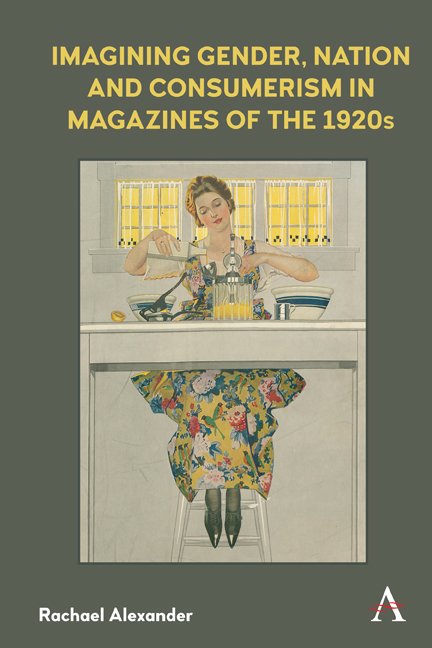Book contents
- Frontmatter
- Dedication
- Contents
- List of Illustrations
- Acknowledgements
- Introduction
- 1 Two Home Journals: A Comparative Approach
- 2 The Art of Femininity: Aspiration and Self-Improvement
- 3 The Home and Domesticity: Readers, Consumers, Citizens
- 4 Fashionable, Beautiful, Moral: Idealised Images of Femininity
- Conclusion
- Appendix: Content Analysis of Advertising from the Ladies’ Home Journal and Canadian Home Journal
- Notes
- References
- Index
2 - The Art of Femininity: Aspiration and Self-Improvement
Published online by Cambridge University Press: 14 December 2021
- Frontmatter
- Dedication
- Contents
- List of Illustrations
- Acknowledgements
- Introduction
- 1 Two Home Journals: A Comparative Approach
- 2 The Art of Femininity: Aspiration and Self-Improvement
- 3 The Home and Domesticity: Readers, Consumers, Citizens
- 4 Fashionable, Beautiful, Moral: Idealised Images of Femininity
- Conclusion
- Appendix: Content Analysis of Advertising from the Ladies’ Home Journal and Canadian Home Journal
- Notes
- References
- Index
Summary
Now, it would be an overstatement to insist that the art of living is exclusively under the control of women, yet it is approximately true that the social arts – conversation, cookery, dress, manners, the more gracious forms of personal intercourse – owe their beginnings and continued cultivation to the care of women.
– John Peale Bishop, Vanity Fair, Nov. 1920Knowing what is new or popular may be a means of gaining prestige and acceptance. Moreover, knowing the consumption patterns of the next higher social class may facilitate social mobility.
– Russell Belk and Richard Pollay, ‘Images of Ourselves’, 1985In ‘The Art of Living as a Feminine Institution,’ published in the November 1920 issue of Vanity Fair, American poet John Peale Bishop outlines what he describes as ‘phases of civilization’ (47). Included alongside ‘man's conquest over nature’ and ‘man's conquest over himself ‘ (47) is the art of living, seen to be contained within daily routine and domestic social encounters. Bishop defines this art of living as primarily feminine, and his concise list of what he deems ‘the social arts’ could serve as a draft contents page for the women's magazines of the period. For the intended readership of mass-market magazines in the 1920s, the improvement of the domestic environment and the projection of a successful image of the self as wife, hostess and fashionable woman remained highest on their list of priorities. Yet, when the 1920s are mentioned, especially in the context of North America, the housewife (or future housewife) is not the dominant popular image.
Rather, it is the flapper who springs most readily to mind. Perhaps this is because, as far as images of femininity go, she has come to be symbolic of so many things: social change, controversy, shifts in gender paradigms and the decline of traditional models of morality, among others. Or perhaps it is because, visually, she is so easily recognisable: with her short, bobbed hair; her slender, androgynous figure; her more revealing, loose-fitting clothes. The flapper was ever-present in smart magazines such as Vogue, Harper's Bazar (later Harper's Bazaar, 1898– present), and Vanity Fair throughout the 1920s and into the 1930s.
- Type
- Chapter
- Information
- Publisher: Anthem PressPrint publication year: 2021



